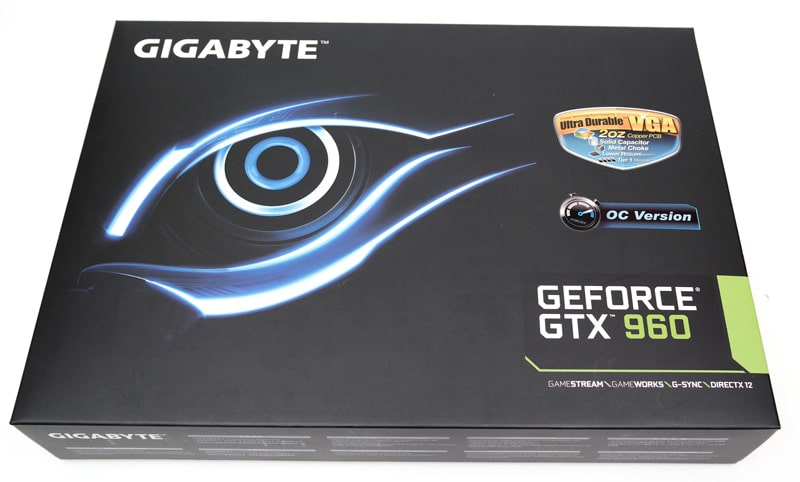Gigabyte GeForce GTX 960 2GB ITX Graphics Card Review
Introduction and A Closer Look

The GeForce GTX 960 has been with us for a few months now, it has established itself as the ‘go-to’ graphics card for under $200. With the amount of power graphical power it produces at this price point, it has really been taken on by the mid-range enthusiast market and as such, NVIDIA allowed manufacturers to release an ITX version, much like the NVIDIA GTX 970 before it. This new form factor is set to take the Small Form Factor (SFF) a light. Well under the typical MSRP of the rest of the GTX 960 range, the ITX models. The push for the GTX 960 was to move stagnant gamers from their aging technology. The data was collected from a Steam survey; results showing the typical powered graphics card around a GTX 660 or lower.
Today we have Gigabyte’s offering into the ITX GTX 960 market, the Gigabyte Geforce GTX 960 2GB ‘ITX Edition’ OC; that’s a bit of a mouthful, so for the rest of the article, I will refer to it as GTX 960 ITX. The reason for the ‘ITX’ label is the entire length of the card is only 17cm, which is the length of an ITX motherboard. The card features all of the typical GTX 900 series features, but due to the decreased size, the flex display has been removed due to fewer output ports. Performance wise, it has two overclocked settings; OC and Gamer. The gamer has the highest overclock at around 8% over stock, but leaves the memory clock at the standard 7010MHz. It features the same 120W TDP and 128 Bit bus interface as the standard GTX 960, so let’s see if the increased clock speeds is enough to prove this ITX size card has what it takes to compete.

The packaging follows the same design as the other Gigabyte VGA boxes, plain and simple with just the key features.

Inside the box, we find a Molex to PCIe 6 pin cable, manual and driver disk.

The card is very plain, a very similar design to the GTX 970 ITX Edition. It features the newly implemented Windforce 92mm fan with increased air flow and silence.

Along the bottom of the card is nothing interesting; the PCIe interface and the side of the cooling shroud.

At the end of the card, we see the heatsink sticking out with open-ended fins for the hot air to be expelled.

Looking down onto the top of the card, still a very boring looking card, but you do get a look at those massive copper cooling pipes.

To keep the cost down, Gigabyte didn’t incorporate a backplate on this graphics card.

The outputs offered is very wide for a card this size, 1x HDMI, 2x DVI and 1x DisplayPort. This means there aren’t enough ports to carry out FlexDisplay.










Ive been reading reviews about all 960 in sale(galax, gygabyte and zotac)…
Seems that(based on yar review too), notable differences still lay in temps and RMA…
Almost same perfomance in all those…
So im getting this one till 1060 arrives…
thnx, anyway!
goVEGAN